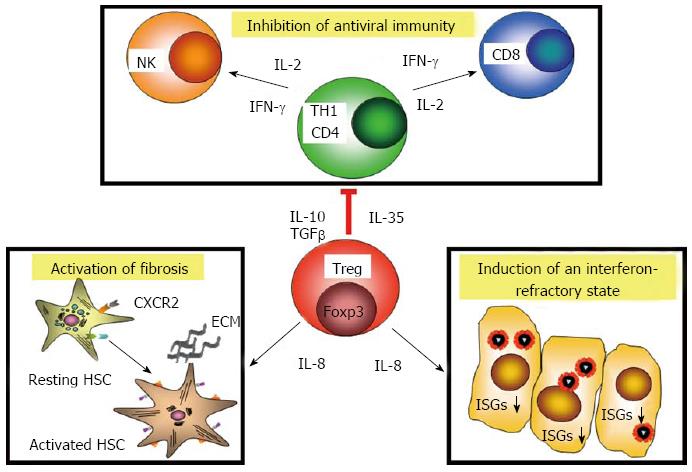Copyright
©2013 Baishideng Publishing Group Co.
World J Gastroenterol. Nov 28, 2013; 19(44): 7852-7866
Published online Nov 28, 2013. doi: 10.3748/wjg.v19.i44.7852
Published online Nov 28, 2013. doi: 10.3748/wjg.v19.i44.7852
Figure 2 Multiple activities of hepatitis C virus-specific regulatory T cells in chronic hepatitis C.
Regulatory T cell (Tregs) inhibit antiviral immunity via release of immunosuppressive factors, such as interleukin 10 (IL-10), transforming growth factor beta (TGF-β) and interleukin 35 (IL-35). Tregs in hepatitis C are also differentiated towards interleukin 8 (IL-8) production. Release of IL-8 binds to its receptors, such as CXCR2 on hepatic stellate cells (HSC), which become activated and produce extracellular matrix (ECM) components. IL-8 down-regulates interferon-stimulated genes in infected cells and induces an interferon (IFN)-refractory state, which also counter-acts antiviral immunity. ISGs: Interferon-stimulated genes.
- Citation: Spengler U, Nischalke HD, Nattermann J, Strassburg CP. Between Scylla and Charybdis: The role of the human immune system in the pathogenesis of hepatitis C. World J Gastroenterol 2013; 19(44): 7852-7866
- URL: https://www.wjgnet.com/1007-9327/full/v19/i44/7852.htm
- DOI: https://dx.doi.org/10.3748/wjg.v19.i44.7852









